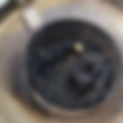1 result found with an empty search
- How frequently should you schedule a professional chimney sweep for your home?
Keeping your chimney in top shape is essential for any home with a fireplace or wood-burning stove. But the big question is: "How often should I get a chimney sweep?" Regular maintenance significantly extends your chimney's lifespan and reduces fire hazards and health risks from poor air quality. This post will break down the factors that influence how often you should schedule a chimney sweep and provide practical tips for establishing a maintenance routine. Understanding Chimney Functionality Chimneys act as exhaust systems for fireplaces and heating appliances, ensuring smoke and harmful gases exit safely. Over time, soot and creosote build up within the flue, the narrow passage in the chimney. Ignoring this accumulation can lead to flammable deposits and serious safety hazards. For instance, a chimney with excessive creosote can ignite at temperatures as low as 232°c, creating a fire risk for your home. Knowing how your chimney works underscores the importance of regular cleaning. Why Is a Professional Chimney Sweep Important? Some homeowners think about cleaning their chimneys themselves, but hiring a professional chimney sweep is essential for safety and thoroughness. Professionals have the right tools, training, and experience to conduct a deep clean and identify issues that you may overlook. A typical chimney sweep involves: Removing creosote buildup, which can save you from a potential fire hazard. Clearing blockages that might cause smoke to back up into your home. Inspecting the chimney for structural integrity to prevent costly repairs later. General Recommendations for Chimney Sweeping The Australia Home Heating Association (AHHA) suggests scheduling a chimney sweep at least once a year. However, the frequency can change based on various factors: Type of Fuel Used : Homes using wood-burning stoves may need to be cleaned 2-3 times per year due to higher creosote production. In comparison, gas appliances usually require less frequent cleanings, sometimes just once yearly. Usage Frequency : If you use your fireplace regularly, you should consider having it cleaned every six months. Research indicates that frequent users face a 40% higher risk of chimney fires if maintenance is neglected. Age and Condition of the Chimney : Older chimneys or those with signs of wear and tear may need more attention, as they are more prone to blockages and structural concerns. Local Regulations : Some council's have specific guidelines for chimney maintenance. Be sure to check if your area requires more frequent inspections. Signs Your Chimney Needs Attention Being observant is crucial for maintaining your chimney. Here are common signs that signal it’s time for a professional cleaning: Soot Build-up : If you see soot around your fireplace, it's a clear signal for a cleaning. Even a thin layer can grow rapidly if not addressed. Unpleasant Odors : Bad smells from your chimney could indicate serious creosote buildup or other issues, requiring prompt attention. Smoke Backing Up : If smoke is filling your home, you likely have a blockage. Act quickly to prevent smoke inhalation hazards. Debris or Animals : Finding leaves, twigs, or animal nests in your chimney can drastically impair its efficiency. These require professional removal. Seasonal Considerations For optimal safety, schedule a chimney sweep before the heating season starts. This ensures your chimney is clean when you frequently use your fireplace during colder months. If you use your fireplace often, consider a spring cleaning to prepare the chimney for summer. This post-season clean helps address any issues and keeps your chimney safe for next winter. DIY vs. Hiring a Professional While it might be tempting to clean your chimney yourself, hiring a professional is crucial for thorough safety. They bring advanced equipment and know-how to ensure your chimney is in excellent shape. Homeowners can, however, perform simple checks between professional visits. Regularly inspect for visible cracks or obstructions, ensure your chimney cap is in good condition, and keep an eye on airflow issues. Final Thoughts on Chimney Maintenance Determining how often to schedule a chimney sweep depends on various factors, but a good rule of thumb is to have it cleaned at least once a year. If you frequently use wood-burning appliances or have an older chimney, consider more regular inspections and cleanings. By being on the lookout for potential issues and sticking to a maintenance schedule, homeowners can enjoy a safer and more efficient chimney system. Regular chimney sweeps not only protect your home from fire hazards, they also improve the air quality in your living spaces. For a safer and cleaner home, investing in quality chimney maintenance is worthwhile. Don’t wait for a problem to arise—schedule your chimney sweep today! Close-up view highlighting the soot accumulation in a residential chimney tophat / cowl. Chimney sweep servicing a residential chimney.

.jpg)
